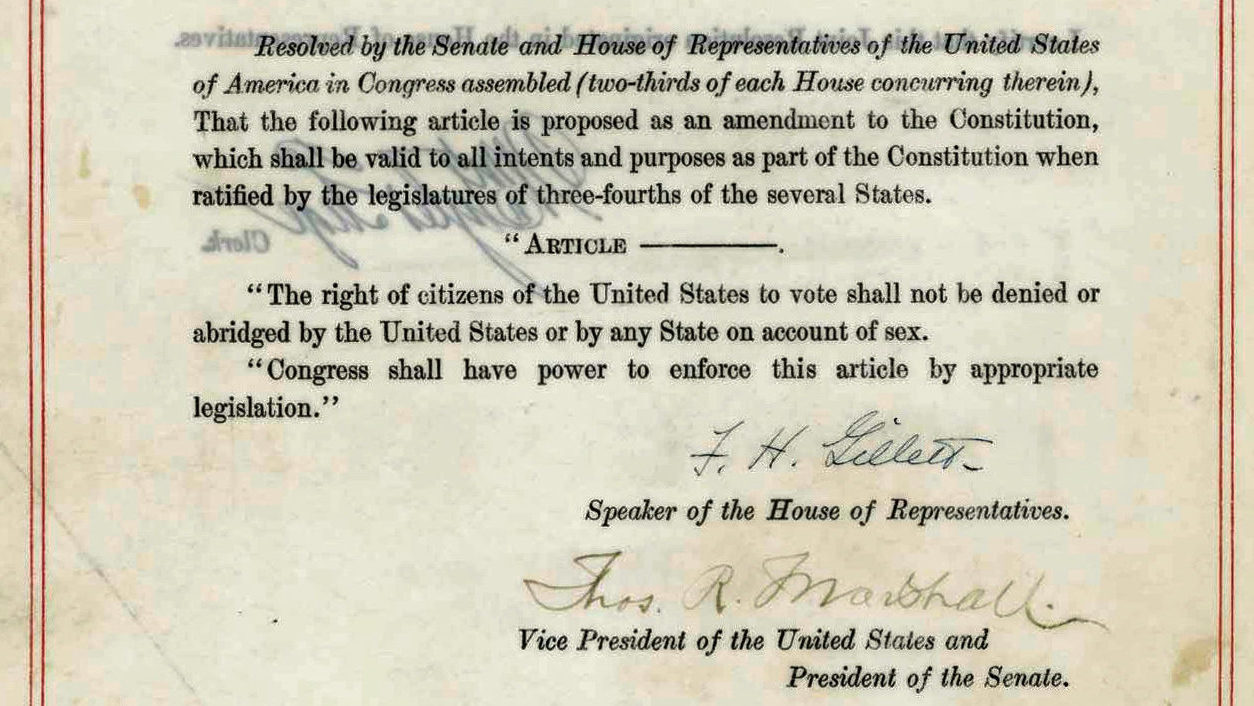19th Amendment – Rights of Suffrage for Women – Original as Ratified by Congress, August 1920
The last two sentences in the picture above changed our country dramatically. This article is in honor of our 19th Amendment.
The Amendment’s journey from Seneca, New York, to our U.S. Constitution was long and torturous. Dataw Island has four people connected to the Women’s Suffrage Movement: Sarah Barnwell Elliott, Kate Gleason, Fanny Sams Bell, and Conway Whittle Sams. Sarah was a women’s suffrage movement leader at the state and national levels. Kate was the great industrialist who purchased Datha Island in 1927. Fanny was one of the millions of women across the nation who proactively worked for women’s rights. Conway, a lawyer in Virginia, was vehemently against giving women the right to vote!
The 200-year Journey to our U.S. Constitution (highly abridged)
Before the American Revolution, several provinces allowed women to vote. But even this limited suffrage was eliminated with the birth of our nation. By 1807 all state constitutions denied women suffrage. Finally, in 1848, a convention of both men and women met in Seneca Falls, New York. They adopted a Declaration of Sentiments, which included a resolution urging all women the right to vote. However, even then, this right was one of many rights being argued. There were actually 12 resolutions on women’s rights, including the right to vote, to own and inherit property, the right to education, and more. When the convention members voted on the ninth resolution, which was for the right to vote, it barely passed.
Various actions were taken to ensure this right at the local and state levels, but none of the efforts succeeded at the national level. The early strategy for getting women the right to vote was a collaboration with abolitionists like Frederick Douglas. They had a common goal of equality for all. But as the Civil War approached, this collaboration was pushed to the side. When the war was over, there was a focus on reconstruction, which did not prioritize women’s equality, let alone suffrage. Also, the women’s organizations pursuing suffrage had several diverse goals, like temperance, equal pay in the workplace, etc. This tended to dilute their voice at the national level. One key argument was that existing laws already allowed women to vote; they were just incorrectly interpreted as excluding women. It wasn’t until the U.S. Supreme Court shut this approach down that Susan B. Anthony and Elizabeth Cady Stanton, in 1878, began to press for a new constitutional amendment.
World Word I provided the crucible for women to perform work once viewed as for men only while cloaked in patriotism. A window of opportunity was opened to push again for women’s equality in the voting booth.
The suffragettes endured some very tough battles through all this. For instance, in the summer and fall of 1917, several nationally prominent suffragists were among over 150 women arrested for picketing at the White House. The women were held at what was then the Occoquan Workhouse (later Lorton Prison) in northern Virginia. The prisoners were tortured, beaten, and abused. Some began a hunger strike and were force-fed.
Sidebar: The prison was closed 80 years later and eventually purchased by Fairfax County, who converted it into a museum and cultural arts center. I’ve been there. The stories in the small museum of those dark days in 1917 are awful.
In 1919, Congress passed a women’s suffrage amendment and submitted it to the states for ratification. Within the year, the necessary 36 states’ majority was reached to trigger ratifying the amendment. The 36th state was Tennessee, which approved the amendment on August 18th.
On August 26th, 1920, the 19th amendment became part of our U.S. Constitution.
Unfortunately, the story did not end there because not all elections are at the federal level. It took each state and locality quite a while to bring their laws in sync with the 19th Amendment. For example, South Carolina did not certify their state and local laws met the 19th Amendment requirements until 1969 [Boddie]!
Beaufort County
Before I get to the four individuals that connect Dataw Island and the 19th Amendment, I should mention that “…Beaufort County produced some of the state’s most progressive women’s rights advocates” in the late 19th Century [Rowland.] You can read about them in Volume 3, Chapter 9 of Larry Rowland’s trilogy on the history of Beaufort County. One name caught my eye – Sarah Barnwell Elliott. She led the suffrage movement in Tennessee.
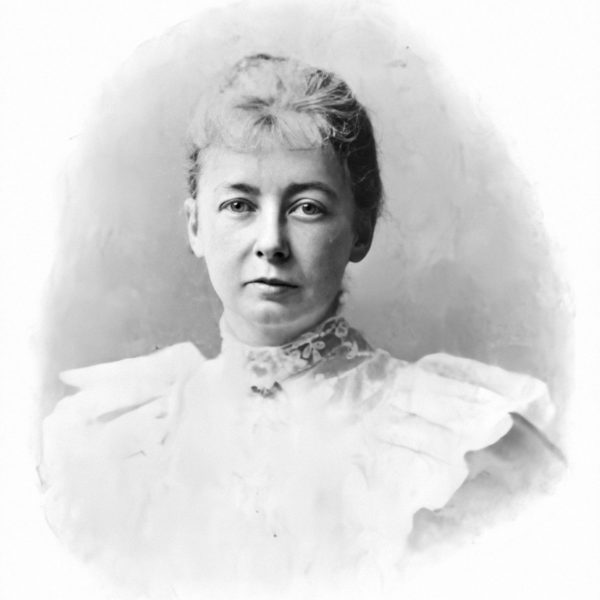
Sarah Barnwell Elliott (1848-1928)
Sarah’s middle name was a tip-off to a possible Sams connection. She was born in the summer of 1848 in Savannah, Georgia, to Stephen Elliott (1806-1866) and Charlotte Bull Barnwell (1810-1895). Sarah was the youngest of five children. The two oldest and her parents had been born in Beaufort, SC. Thus she was considered a “child of antebellum Beaufort” [Rowland, page 222.] She is a distant cousin of ‘our’ William Sams, who purchased Datha Island in 1783. The family connection between the two is via the Barnwell line back to Tuscarora Jack Barnwell (1671 – 1724).
Any direct Sams descendant alive today is related to this dynamic woman.
Sarah’s father was a graduate of Harvard. Stephen Elliott practiced law in Beaufort and Charleston for several years before changing professions. In 1836 he was ordained as a priest in the Protestant Episcopal Church. He eventually served as the Episcopal bishop of Georgia and was a founder of the University of the South at Sewanee, Tennessee.
Sarah discovered her own love for writing in 1886 while studying at Johns Hopkins University. She became an accomplished and successful author.
In Stephen B. Barnwell’s family history, he says, “her most important work was Jerry: A Novel published in serial form in Scribner’s Magazine in 1890-91. It was an immediate success and later published in England and Australia and translated into German. The story of a Tennessee mountain boy, it helped to focus attention on the hitherto little-known culture of the Southern mountaineer and to turn Southern literature away from the sentimentality of the antebellum period. She did most of her writing in her log cabin study behind the Elliott house on the campus [of the University of the South].”
After living and writing in New York City for seven years, Sarah moved back to Sewanee in 1902 and began devoting her time and energy to women’s rights. She served as president of the Tennessee State Equal Suffrage Association and vice-president of the Southern States Woman Suffrage Conference.
Sarah Barnwell Elliott died in Sewanee in 1928 and was buried in the University of the South Cemetery, along with her mother and several siblings.
A generation later, Kate Gleason was born.
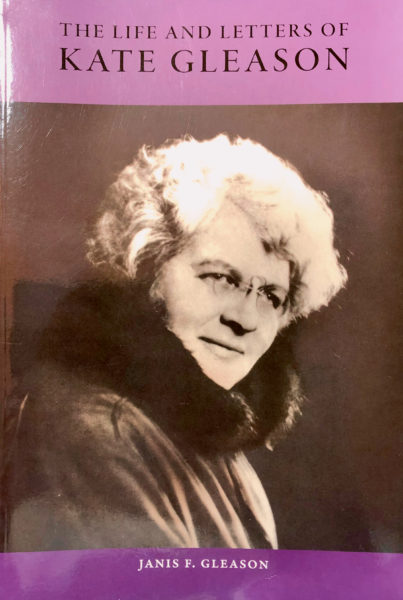
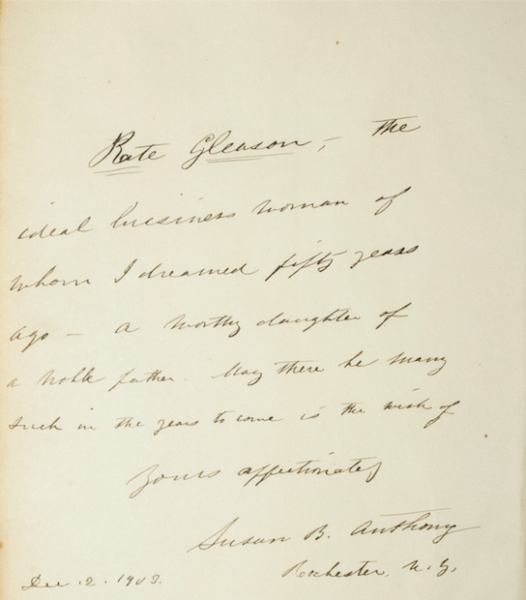
Catherine Anselm “Kate” Gleason (1865 – 1933)
In my previous article on strong women, I featured Kate Gleason, a great industrialist from Rochester, New York, who purchased Dataw Island in 1928. I did not talk about her role in the Women’s Suffrage movement in that article. Kate’s mother, Ellen McDermott Gleason, was a friend of many suffragettes, including her neighbor in Rochester, Susan B. Anthony. According to Gleason biographer Janis F. Gleason [Gleason], Kate was inspired by them all.
A strong influence on Kate’s spirit of independence was her father. Biographer Jan Gleason says William Gleason encouraged his daughters and other women to take their rightful places in what was then a man’s world. “He had supported women’s suffrage when it was not popular or common for a man to do so, and Susan B. Anthony had called him ‘noble.’ ” [Gleason]
In her later years, Susan B. Anthony (1820-1906) gave a book to Kate with this inscription, “Kate Gleason – The ideal businesswoman of whom I dreamed fifty years ago – a worthy daughter of a noble father. May there be many such in the years to come is the wish of your affectionately, Susan B. Anthony. Rochester N.Y., Dec 2, 1903.” [See the image above of the original inscription.]
In 1918, Kate Gleason became the first woman to become the president of a national bank, the First National Bank of East Rochester. Her biographer clever notes as bank president Miss Gleason was authorized to sign U.S. currency, but she could not vote! Ever the supporter of women’s suffrage, Kate gave the first twenty-dollar bill she ever signed to her friend Dr. Anna Howard Shaw, who had headed the National American Woman Suffrage Association from 1904 to 1915.
In Larry Rowland’s third volume on Beaufort County history, Chapters 12 and 14, he describes the significant impact Kate Gleason had on Beaufort. As for Dataw Island, when Kate Gleason died rather unexpectedly in 1933, she left our island to her secretary, Libby Sanders. While Kate had brought the ownership of the entire island back under one person, Libby, as she married and raised a family, kept the island together rather than selling it off in pieces. The island’s integrity was solidified when Libby’s two sons, Richard and Lawrence Rowland, sold it to ALCOA Properties in 1983.
As Rowland says, “Alcoa Properties fulfilled the dream of Kate Gleason, who had planned to develop the property in 1926.”
While Kate lived to see women get the right to vote, Fanny (Sams) Bell, did not.
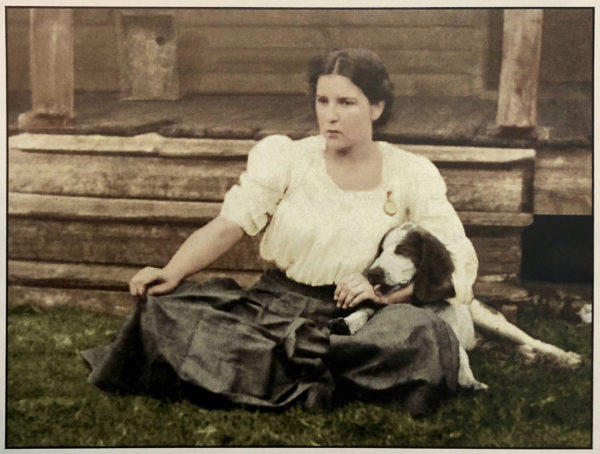
Fanny Henrietta (Sams) Bell (1890 – 1920)
Fanny is one of three daughters born to Mikell Seabrook Sams and Sarah Jane Bembry in Florida. Fanny is the GG-Granddaughter of William & Elizabeth Sams. Her family is part of the Florida Pioneers you heard about in a post earlier this year and in Joe Roney’s recent DHF presentation. In her later years, Fanny’s cousin Martha “Mattie” (Sams) LaRoche began reflecting on their experience in Florida. Mattie’s diary was recently published by the Pine Island Preservation Society [LaRoche]. Since Mattie was a contemporary of Fannie’s, this book provides insights into the experiences of these pioneer women of Merritt Island, FL.
However, we know little about Fanny’s activities as a suffragette. We know she was a proponent, as you can see in the picture below, circa 1907. She is in a wagon of like-minded women preparing for a rally or parade. Unfortunately, Fanny died in 1920, just three months before the 19th Amendment was ratified.
I dare say she was not a fan of Conway W. Sams, her second cousin, once removed.
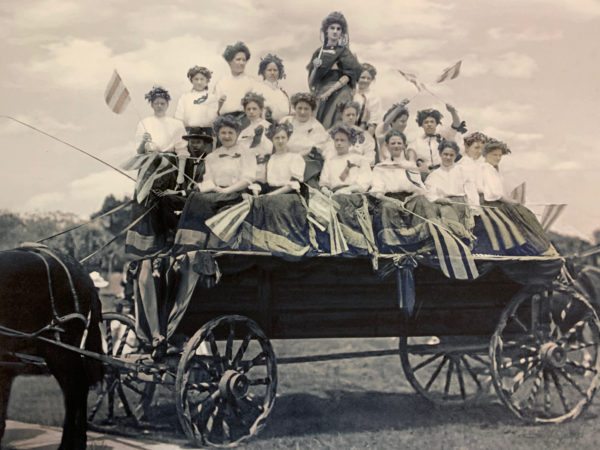
Conway Whittle Sams (1864 – 1935)
CW Sams was active in the women’s suffrage movement but on the opposing side; he was a vehement anti-suffragette. Conway was a well-respected lawyer in VA his whole life, and I suppose his views carried some weight. In 1913 he published a 340-page book that explained in biblical detail why women should NOT be given the right to vote. Much of the book is filled with fire and brimstone from Adam and Eve onward. It’s a very tough read but interesting. It gives you a sense of what the suffragettes were up against.
He concludes his book with this paragraph. It is one of his calmer moments, and you may find yourself falling into his trap.
“What should be the most beloved spot on earth is one’s home, and the tenderest and most enduring of human relationships cluster around it. Here should be found love, care, and protection for the young; affection, obedience, and reverence for the old. Happiness for all its members will result from a correct understanding and discharge of the duties, rights, and mutual relations of the persons who compose the little group here closely united to one another. But for this, order is essential, and order requires a leader clothed with proper authority. Husbands and fathers are these natural leaders. Any movement of society, therefore, which degrades or prejudices their position and influence cannot be right, for it is in opposition to the established order of creation.”
(Below in the Sources, you can download a PDF version of his entire book.)
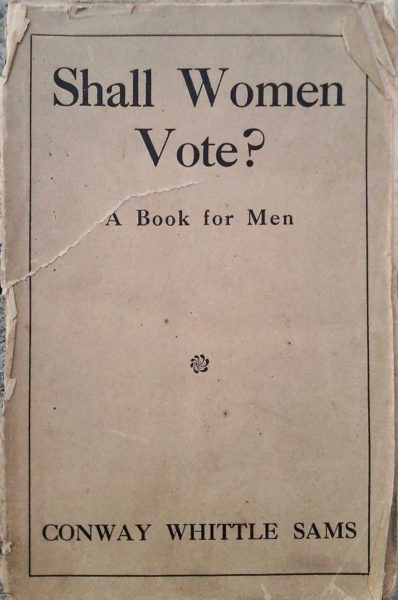
Summary
The 19th Amendment’s journey to ratification involved people in many locations across many generations. Dataw Island has four people connected to the Women’s Suffrage Movement: Sarah Barnwell Elliott, Kate Gleason, Fanny (Sams) Bell, and Conway Whittle Sams. The graphic below shows the relationship between the four people and our island.
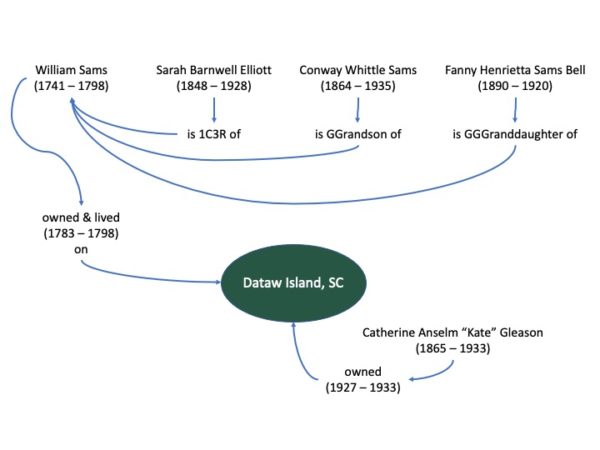
Sams of South Carolina
In our SAMS genealogy database, we currently have over 2700 individuals. Not all are direct descendants of Bonham SAMS, the first SAMS to immigrate to the Lowcountry of North America. The database reveals that in 1920, thirty-one women who were direct SAMS descendants were now allowed to vote in national elections. The Presidential election held on Tuesday, November 2, 1920, resulted in Republican Senator Warren G. Harding of Ohio defeating Democratic Governor James M. Cox of Ohio to become the 34th president of the United States.
I hope that all thirty-one of these SAMS women made it to the polls that day.
Sources
Barnwell, Stephen B. – The Story of an American Family, 1969
Boddie, T. Michael – SC waited until 1969 to ratify the 19th amendment, giving women the right to vote, The Post and Courier,
Clouse, Allie and Kennedy, Corinne S. – Meet some of the Tennessee suffragists who helped change history, Knoxville News Sentinel, August 14, 2020
Gleason, Janis F – The Life and Letters of Kate Gleason, 2010
Holden, Joel and Riski, Bill – The Sams Family Tree, Ancestry.com, accessed August 23, 2020.
LaRoche, Mattie Sams – Mattie Sams Diary: Recollections of a Florida Pioneer Life, Pine Island Preservation Society, Merritt Island, FL, 2020
Rowland, Lawrence S. and Wise, Stephen R. – The History of Beaufort County, South Carolina, Volume 3, Bridging the Sea Islands Past and Present, 1893 – 2006, Chapters 9, 12, and 14. 2015
Sams, Conway Whittle – Shall Women Vote? A Book for Men, 1913 [PDF download]
Wikipedia terms: Sarah Barnwell Elliott, Conway Whittle Sams, 19th Amendment, Women’s suffrage in the United States,
#52Sams 19th Amendment


